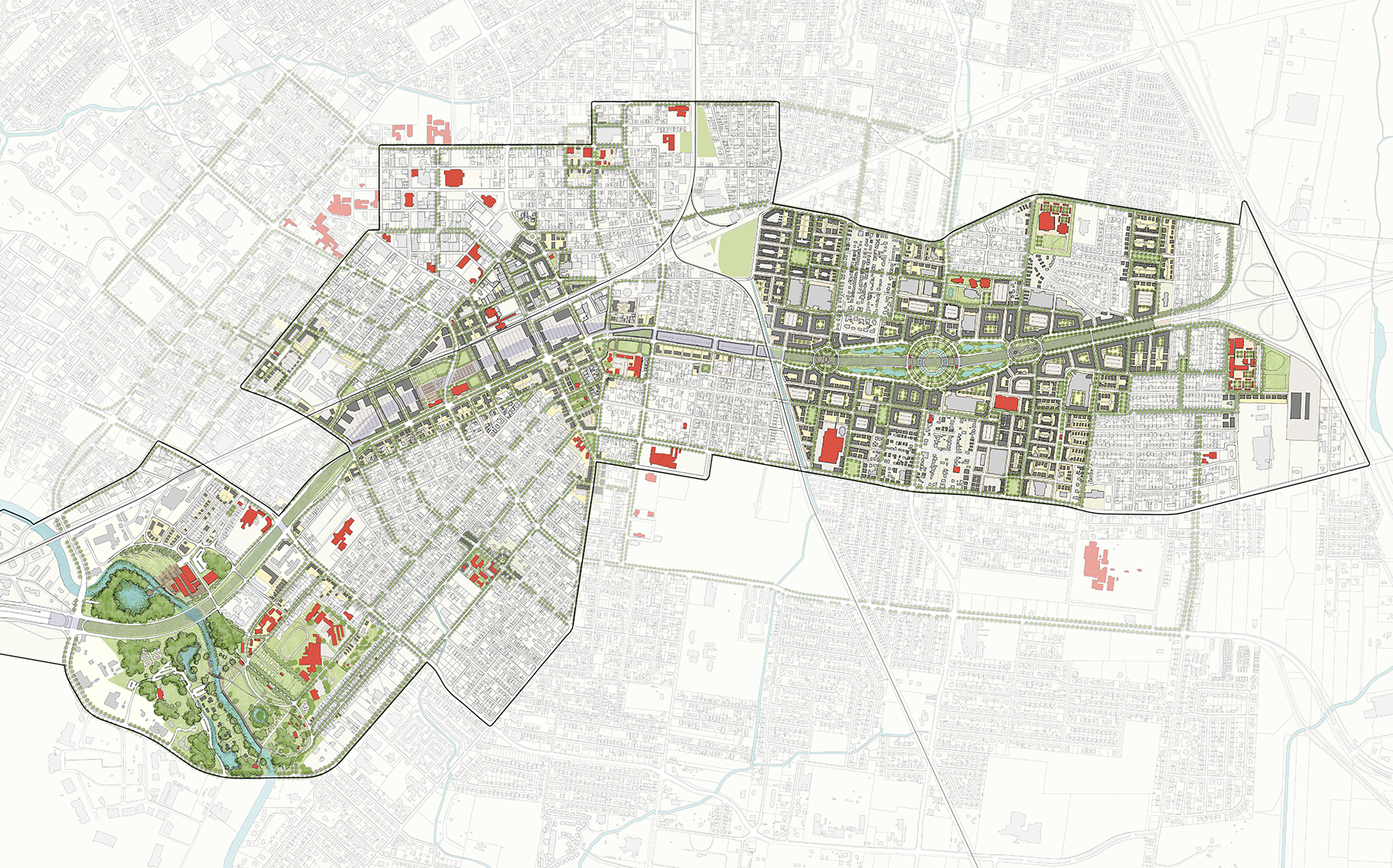Evangeline Corridor Initiative
Location: Lafayette, Louisiana
Project Consultants:
Right Angle (Outreach, Branding, and Communications), DPZ Partners (Planning Partner), Spackman Mossop + Michaels (Landscape Design), Urban3 (Economic Planning and Implementation), TND Engineering (Transportation Engineering), Todd Bressi (Public & Civic Art), Gateway Planning (Infrastructure and Government Policy)
Lafayette is preparing for a big change: a 5.5-mile portion of the Evangeline Thruway (US Hwy 90) will become an extension of Interstate 49. This federal project, which is already underway, will be carried out by the Louisiana Department of Transportation. Locally, this change will help relieve traffic congestion and create a safer, faster hurricane evacuation route. It will also become part of an international network. When I-49 is complete, it will connect New Orleans, Louisiana with Winnipeg, Canada.
This coming change is also an opportunity. For decades, neighborhoods in the Evangeline Corridor — areas closest to the I-49 Connector route — have been challenged by poverty, crime, and low property values. This is an opportunity to make our neighborhoods stronger: to preserve unique cultures, reverse blight, and promote economic investment.
When Lafayette Consolidated Government was awarded a TIGER grant in 2014, the Evangeline Corridor Initiative (ECI) was created to spur neighborhood revitalization in areas adjacent to the Evangeline Thruway and to help prepare residents and business owners for the challenges posed by the impending Lafayette I-49 Connector project, which is the upgrade of the current Evangeline Thruway (US Hwy 90) into a limited-access elevated interstate.
The ECI Project and Planning Consultant Team (ECI Team), which comprises architects, designers, planners and communications professionals, was created to facilitate public input and create design guidelines for each district as well as a comprehensive revitalization plan for the Corridor.
The ECI project will guide development that supports corridor neighborhoods by providing:
- Planning and design concepts for infrastructure improvements to promote connectivity, provide alternate modes of transit, and drive economic development
- Recommending new land-use patterns surrounding the Connector and Evangeline Thruway that promote mixed-use development while strengthening adjacent neighborhoods
- A plan for implementing specific interventions, often identified as Catalyst Projects, that will provide neighborhood improvements that enhance the quality of life for corridor residents
The goals of this project are to reclaim and expand community assets. A primary aim of the initiative is to reconnect the city fabric, which has long been interrupted by the railroad and the Evangeline Thruway.
Planning strategies & design concepts cover two scales: Corridor-wide and neighborhood. While the districts serve as Corridor building blocks, the central need is to reconnect the area’s historic fabric that was separated by the Thruway in the 1960s. Execution of this plan can help prevent some of the undesirable impacts of such a large infrastructure project while maximizing community cohesion.
Studying the I-49 Corridor from a comprehensive perspective allows for a unified planning framework that highlights shared attributes between districts and neighborhood centers. Treating districts as part of a whole will ensure balanced development through the Corridor. This framework was developed in three phases:
- Identify neighborhood centers and their respective assets.
- Connect district assets through enhanced infrastructure and alternative modes.
- Utilize best practice planning principles to establish strategies and priorities.
The resulting master plan addresses topics such as economic growth, corridor-wide landscaping, public art & placemaking, wayfinding & signage, lighting & safety, & principles for transforming street networks.
The team compiled a Design Manual for each district to identify catalyst projects and guide implementation.













